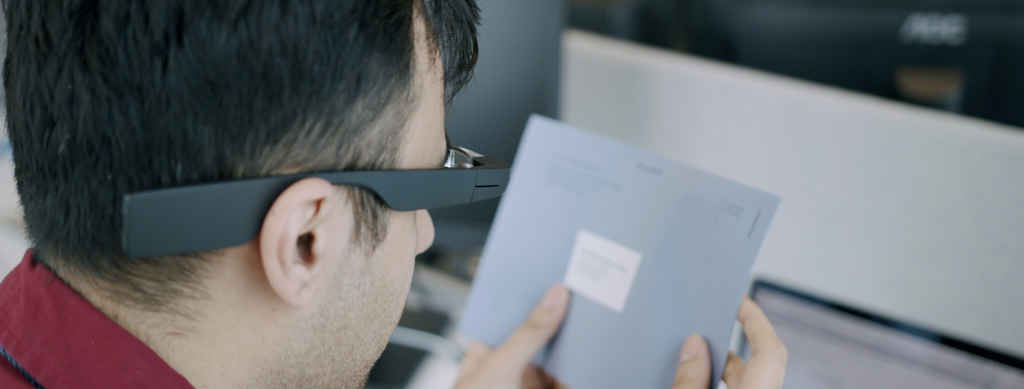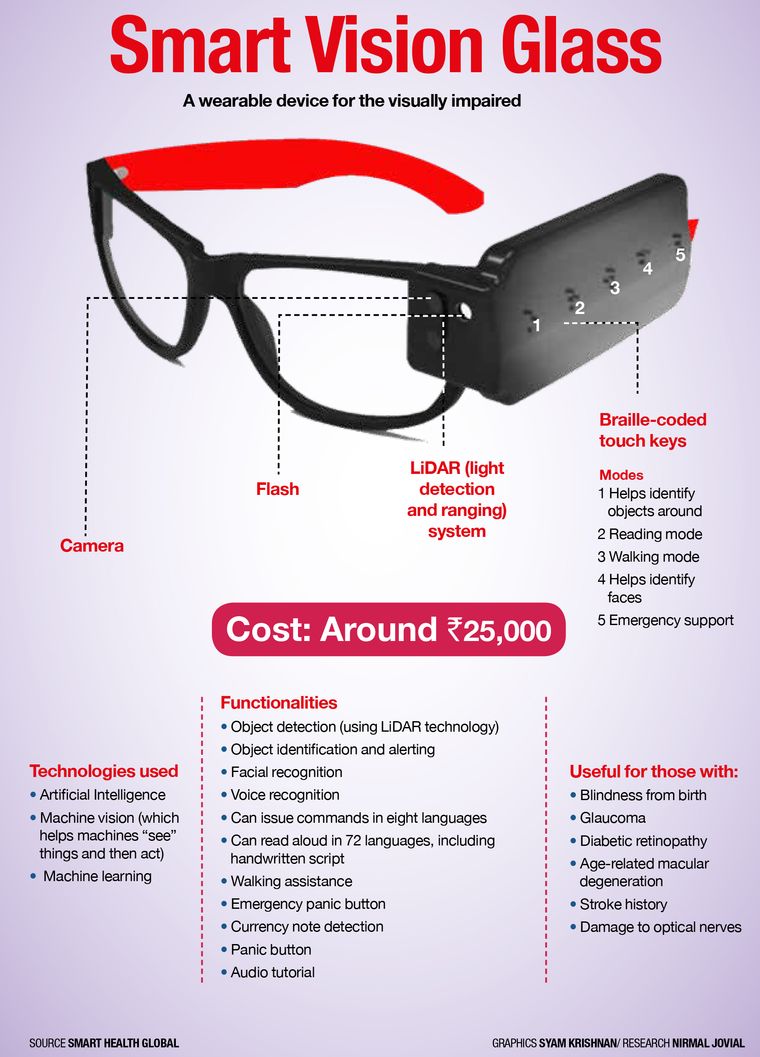OCR Devices for the Blind: Breaking Barriers with Optical Character Recognition
Empowering Self-reliance With Assistive Innovation for the Blind
The combination of assistive modern technology for individuals that are blind or visually damaged stands for a substantial improvement in fostering freedom and boosting lifestyle. With a series of devices-- from display visitors to ingenious responsive tools-- these technologies not just promote navigation and communication yet also promote social addition and participation in different aspects of life. As we explore the varied types of assistive gadgets and their real-world applications, it ends up being clear that the influence is extensive. The evolution of this innovation elevates vital inquiries regarding access and future growths that require more exam.
Recognizing Assistive Modern Technology
Although assistive innovation has progressed significantly for many years, its basic purpose stays the exact same: to boost the quality of life for people with disabilities, specifically those who are visually impaired or blind. This modern technology encompasses a wide series of devices and tools that assist in self-reliance and performance in everyday activities.
Assistive modern technology can be categorized into low-tech and modern services, each designed to fulfill certain demands. Sophisticated gadgets typically include software applications, specialized equipment, and adaptive tools that make use of innovative technology to give assistance in different contexts. Conversely, low-tech remedies may involve daily items that are changed to improve ease of access, such as magnifiers or responsive markers.
The integration of assistive modern technology into the lives of individuals who are blind or aesthetically harmed not only advertises autonomy but additionally fosters social incorporation and participation in instructional and expert settings. By leveraging these technologies, individuals can browse their environments, access details, and interact successfully, thereby enhancing their general high quality of life. Recognizing assistive technology is critical for caregivers, advocates, and experts who intend to support individuals in maximizing their potential and achieving greater independence.
Kinds of Assistive Gadgets
Assistive devices for the visually impaired and blind are necessary tools that enhance daily living by resolving certain obstacles experienced by individuals. These gadgets can be extensively categorized into three main kinds: optical devices, electronic gadgets, and sensory gadgets.

Sensory gadgets, such as Braille screens and tactile maps, supply different means to obtain info. Braille presents convert electronic text into Braille, allowing customers to review touch. Tactile maps provide spatial understanding through increased appearances and lines, enabling for better environmental understanding.
Together, these assistive gadgets empower people with aesthetic problems to involve even more completely with their environments, advertising greater independence and confidence in daily activities.

Effect On Life
The combination of assistive technology into the day-to-days live of individuals who are blind or visually impaired substantially boosts their capability to engage and browse with the world around them. Gadgets such as display viewers, Braille displays, and mobile applications facilitate access to details, enabling individuals to engage with electronic material, communicate efficiently, and take care of daily jobs separately.
Furthermore, innovations like smart glasses and navigating apps give real-time support in unfamiliar environments, improving mobility and self-confidence. These devices make it possible for individuals to recognize barriers, reviewed signs, and also identify faces, thus promoting a sense of freedom in public areas. Additionally, home automation systems, which can be managed via voice commands, permit individuals to manage their living settings better, enhancing convenience and safety and security.
The effect of assistive innovation extends past practical jobs; it advertises social inclusion and psychological health. By bridging the void in between people and their surroundings, these technologies empower users to take part totally in neighborhood tasks, pursue educational chances, and take part in significant relationships. Eventually, the development of assistive innovation is important in redefining the possibilities for people who are blind or visually damaged, leading to an extra available and comprehensive culture.
Success Stories and Reviews

One more powerful testimonial comes from Mark, a current college grad who used screen reading software application throughout his scholastic journey. This innovation allowed him to access training course materials and join conversations, eventually bring about his effective shift right into the workforce. Mark credit ratings assistive technology for encouraging him to accomplish his career objectives, emphasizing its function in leveling the having fun area for people with visual impairments.
In addition, area facilities have reported raised engagement in their programs many thanks to the introduction of obtainable digital platforms. These systems have made it simpler for individuals to attach, share sources, and assistance one an additional. These success tales collectively underscore the extensive result of assistive technology in fostering self-reliance, boosting high quality of life, and damaging down barriers for the blind and aesthetically damaged area.
Future Patterns in Assistive Technology
Arising modern technologies are positioned to reinvent the landscape of assistive technology for individuals that are blind or visually impaired. Developments in artificial intelligence (AI) and equipment learning are improving the capacities of devices, enabling more user-friendly individual experiences. For instance, AI-driven applications are progressively able to identify things and check out message aloud in real-time, supplying customers with valuable details regarding their surroundings.
In addition, advancements in wearable innovation are creating new opportunities for freedom. Smart glasses equipped with augmented truth functions can overlay vital info onto the user's field of vision, facilitating navigating and communication with the atmosphere. The combination of view Internet of Points (IoT) devices is streamlining accessibility in clever homes, enabling users to regulate devices and get notifications with voice commands or tactile interfaces.
The growth of braille displays and tactile comments systems is additionally on the increase, promoting accessibility to digital optometrist surgeon salary web content and improving interaction. As these technologies proceed to develop, they assure to enhance day-to-day living, educational opportunities, and employment leads for people with visual disabilities. Continual cooperation between technologists, customers, and campaigning for groups will certainly be necessary in ensuring these developments satisfy the demands of the community properly.
Verdict
Finally, assistive innovation plays an essential function in improving the self-reliance of individuals who are visually impaired or blind. By supplying vital devices and sources, these technologies help with boosted navigation, communication, and accessibility to details, consequently cultivating freedom and confidence. The transformative impact of assistive tools not just promotes reliable communication with the setting however likewise urges social incorporation and participation in different elements of life, ultimately empowering users to thrive within their neighborhoods.
The assimilation of assistive innovation for individuals that are blind or aesthetically damaged represents a significant innovation in fostering freedom and boosting top Read Full Article quality of life.The assimilation of assistive modern technology right into the lives of individuals who are blind or visually impaired not just advertises autonomy yet additionally promotes social inclusion and involvement in professional and instructional atmospheres. Ultimately, the innovation of assistive innovation is crucial in redefining the opportunities for people who are aesthetically damaged or blind, leading to a much more available and inclusive culture.
Many individuals that are visually impaired or blind have shared motivating success tales that highlight the transformative influence of assistive modern technology on their lives.In final thought, assistive innovation plays a critical function in boosting the self-reliance of people that are visually impaired or blind.